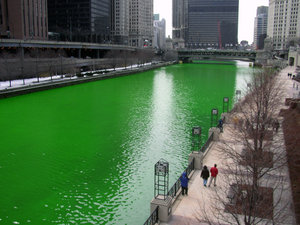 A reader writes:
A reader writes:
It turns out that in certain parts of Venezuela the Catholic populace is allowed to eat Capybara on Ash Wednesday and Lenten Fridays, due to a Vatican ruling centuries ago that the animal could be considered a fish.
See: http://en.wikipedia.org/wiki/Capybara
Some of my friends want to know why this dispensation has not since been lifted. I recall reading that this is because of the economic situation of the country, something about how it would be placing an undue burden on these peoples to forbid the Capybara on Fridays.
To me this seems reasonable, but these friends don’t see it that way. They would like to know why the poor on Fridays can’t just forego meat for a single day of the week, and get their protein from some plant source, like beans.
Of course, they accuse the Church of just being hypocritical and wanting to justify a rediculous papal declaration.
I don’t have independent information on this, but it strikes me as plausible. We noted below that aquatic mammals such as beavers and otters have not traditionally been counted as prohibited on Fridays. Since capybaras spend a good bit of their lives in the water, like beavers and otters, the same would apply to them.
Mind you, I’m not in favor of that. I might let someone get away with counting dolphins and whales as sufficiently fish-like that they don’t count, but anything with four legs and fur, whether it lives in the water or not, I would want to count as carnis. That’s just me, though, and not how traditional moralists have regarded matters.
I don’t see any grounds for charging hypocrisy here, though, especially in regard to a papal decision. I have no proof that the pope ever involved himself in the question, and the Church’s present law doesn’t address the subject, meaning that we have to fall back on the older moralists for tough cases. If the older moralists chose to adopt a "lives in water = okay on Fridays" rule for the sake of not confusing people, we might disagree, we might even think it’s dumb, but we can’t charge them with hypocrisy. It’s not like the pope invented "capybara" Fridays for the sake of cropping up the capybara industry.
I understand that a similar situation exists with Barnacle Geese (once thought to be a fish; to be grown-up barnacles) and also a certain type of Puffin in some parts of Ireland.
Basically, what could be so dire about one’s economic situation that could not possibly, for one day of the week, substitute meat for something else?
I think that someone may have misunderstood something somewhere. It ain’t that impoverished people get to eat meat-like things on Friday because they’re poor. It’s the other way around: The discipline was that everyone refrained from the meat of land animals on Fridays because it was a sign of rejoicing as most people couldn’t (usually) afford it very often.
That has persisted until very recent times. I remember once as a boy, growing up in the impoverished South, going over to a friend’s house and my friend was all excited since, as I was company, his parents were going to serve meat that night.
The reason that things like water-dwelling animals or costal birds that spend a lot of their time over the water were not regarded as counting was not that the people eating them were poor but that they were connected with the water and moralists decided that, lest people get confused and scrupulous, any kind of water animal was okay.
I don’t like that. I think it’s dumb. But that was the consensus on the issue.
The consensus has been changing somewhat. For example, Henry Davis is quite down on villages where seabirds are exempted and says this is likely bogus (he doesn’t use the word "bogus") and that it has more to do with villagers obstinately hanging on to traditional privileges. I can look up the quote if needed.
So, while some might not approve of eating Rodents Of Unusual Size, there’s no question that you can have a pie made with . . . shrieking eels, for example.
UPDATE: Welcome Amy Welborn readers! MORE LENT RESOURCES HERE.
LEARN MORE ABOUT ST. PATRICK’S DAY CELEBRATIONS.
 LEARN MORE ABOUT ST. PATRICK’S DAY CELEBRATIONS.
LEARN MORE ABOUT ST. PATRICK’S DAY CELEBRATIONS. A reader writes:
A reader writes: